Dunstanburgh Castle: Underground Passageways And The Legend Of Sir Guy The Seeker
A. Sutherland – MessageToEagle.com – Dunstanburgh Castle was once one of the largest and most imposing fortresses located over the Northumberland coastal line, in a remote headland and in close proximity to the Anglo-Scottish border.
Medieval castles were usually built to be as defensive as possible and the naturally strong defensive location of Dunstanburgh Castle – with the north side defended by high cliffs – was certainly a wise choice made by its builder.
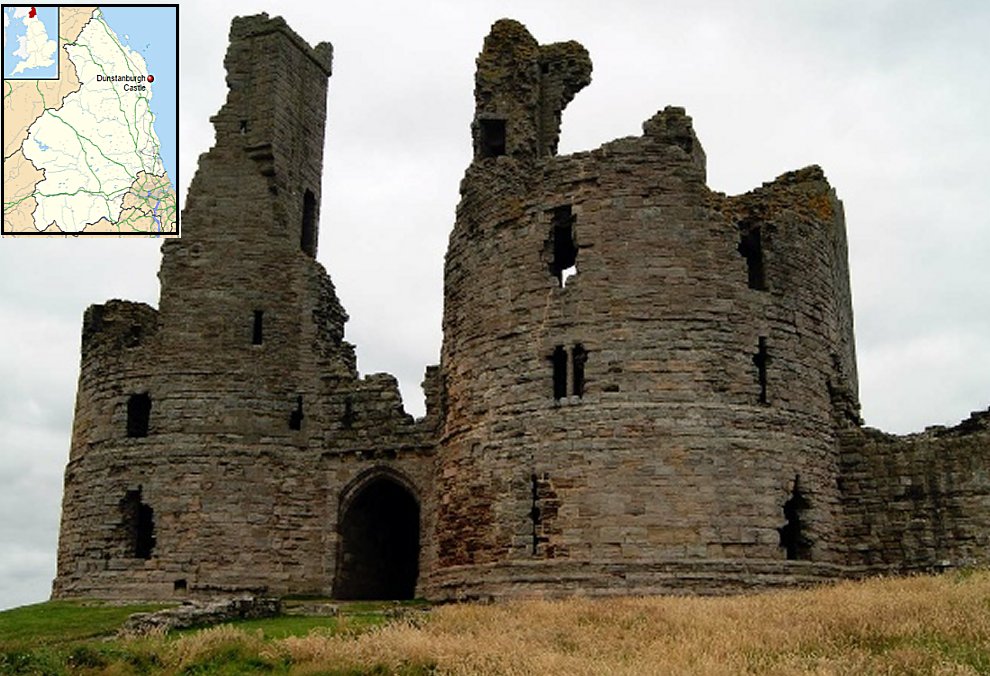
The castle was built between 1313 and 1322, by one of England’s key magnates, Thomas Plantagenet, Second Earl of Lancaster, who strongly opposed his cousin King Edward II and was involved in diverse political activities in England.
The castle, located far away from the King of England and political instability in southern England, was intended to Thomas’ secure refuge, a symbol of his opposition to the king than as a military stronghold.
Thomas Lancaster led two rebellions against Edward. The first, in 1310, resulted in Parliament imposing restraints on Edward’s profligate spending and the imposition of a supervisory council, which Thomas headed.
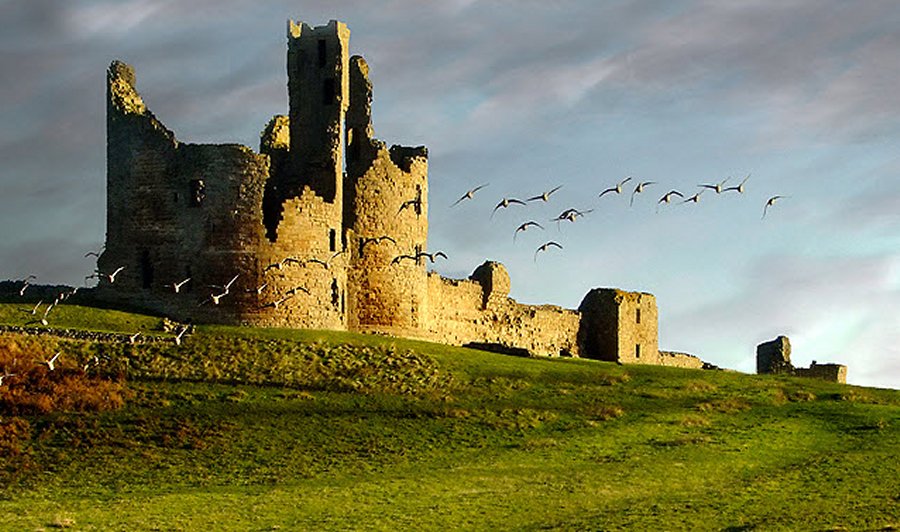
In 1321, he again headed a revolt. This time, he and his supporters were defeated. Thomas was found guilty of treason and executed in 1322.
In the 1380s, the castle was further fortified, but it was besieged with cannon fire multiple times during the Wars of the Roses and finally, after these devastating experiences, fell into ruin.
Except for its ruined gatehouse, today, there is not much left of the fortress, but there is plenty of legends, myths, and stories including the story of Sir Guy the Seeker: a knight cursed to roam the fortress forever. Different versions of the story vary slightly in their details, but typically involve a knight, Sir Guy, arriving at Dunstanburgh Castle, where he was met by a wizard and led inside.
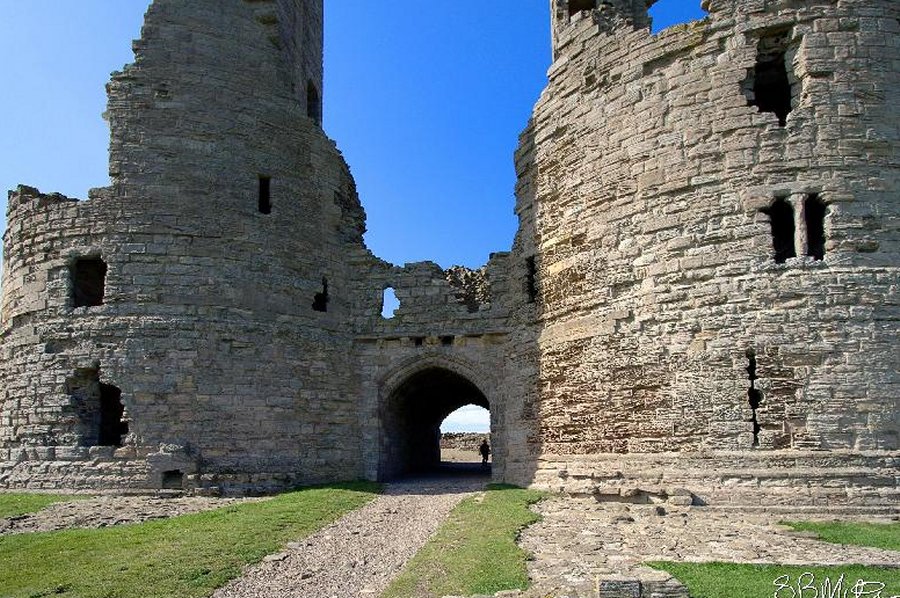
There he comes across a noble lady imprisoned inside a crystal tomb and guarded by a sleeping army. The wizard offers Guy a choice of either a sword or a hunting horn to help free the lady; he incorrectly chooses the horn, which wakes the sleeping knights. Sir Guy finds himself outside Dunstanburgh Castle and spends the rest of his life attempting to find a way back inside.
It is unclear when the story first emerged, but it is undoubtedly related to Dunstanburgh Castle and as many other similar tales, it was possibly inspired by medieval Arthurian legends.
Another very persistent legend has it that beneath Dunstanburgh Castle, there are a lot of hidden passageways connecting the castle with nearby hamlets and villages. The passages can be reached through trap-doors and barns.
The castle is the largest in Northumberland and the site shows traces of much earlier occupation before the erection of the castle was started in 1313 by the Earl of Lancaster.
Written by – A. Sutherland – MessageToEagle.com Senior Staff Writer
Copyright © MessageToeagle.com All rights reserved. This material may not be published, broadcast, rewritten or redistributed in whole or part without the express written permission of MessageToeagle.com
Expand for referencesReferences:
Related Posts
-
 Ancient Mantis-Man Petroglyph Discovered In Teymareh, Iran
No Comments | Mar 16, 2020
Ancient Mantis-Man Petroglyph Discovered In Teymareh, Iran
No Comments | Mar 16, 2020 -
 Unknown Round Temples At Kerma May Solve Some Of Africa’s Ancient Secrets
No Comments | Feb 21, 2017
Unknown Round Temples At Kerma May Solve Some Of Africa’s Ancient Secrets
No Comments | Feb 21, 2017 -
 Unexplained Phenomena At Mysterious Ancient Gungywamp – Is It A Gateway To A Parallel Reality?
No Comments | Jul 4, 2015
Unexplained Phenomena At Mysterious Ancient Gungywamp – Is It A Gateway To A Parallel Reality?
No Comments | Jul 4, 2015 -
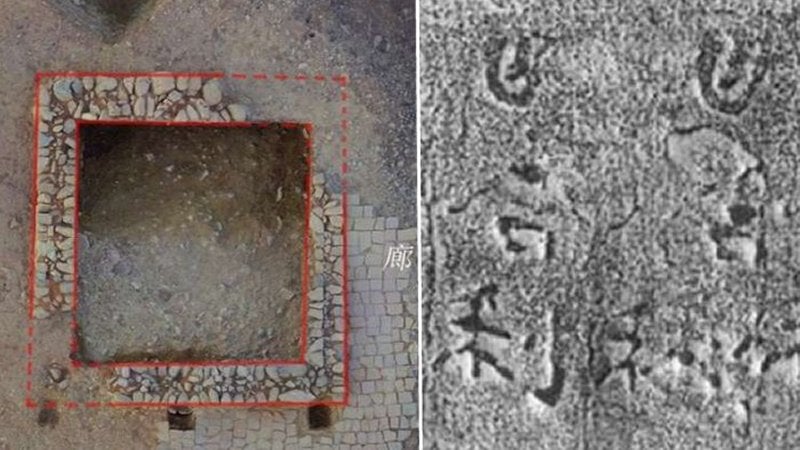 Ancient Temple Complex Dated To Nanzhao Kingdom Unearthed In Southwest China
No Comments | Jan 26, 2021
Ancient Temple Complex Dated To Nanzhao Kingdom Unearthed In Southwest China
No Comments | Jan 26, 2021 -
 What Can The Fate Of Ancient Cities Teach Us About Surviving Climate Change
No Comments | Oct 1, 2021
What Can The Fate Of Ancient Cities Teach Us About Surviving Climate Change
No Comments | Oct 1, 2021 -
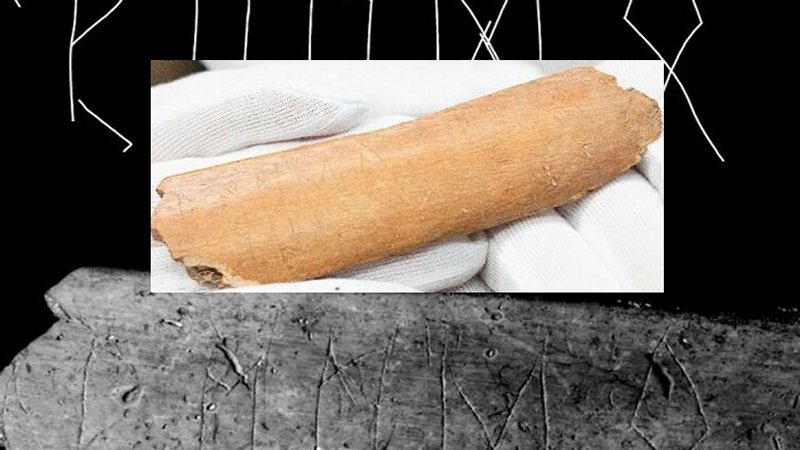 Oldest Writing System Among Slavs To Be Germanic Runes – New Study
No Comments | Feb 15, 2021
Oldest Writing System Among Slavs To Be Germanic Runes – New Study
No Comments | Feb 15, 2021 -
 The Americas Were Not Populated Via The Ice-Free Corridor More Than 15,600 Years Ago – New Study Of Boulders Reveals
No Comments | Mar 23, 2022
The Americas Were Not Populated Via The Ice-Free Corridor More Than 15,600 Years Ago – New Study Of Boulders Reveals
No Comments | Mar 23, 2022 -
 When And Why Was Yakuza, The Japanese Mafia Founded?
No Comments | Jun 13, 2021
When And Why Was Yakuza, The Japanese Mafia Founded?
No Comments | Jun 13, 2021 -
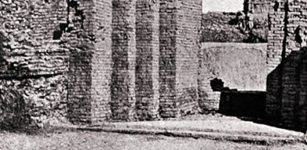 Sumerian City Of Girsu: Political, Religious Center With Large Archive Of Thousands Of Cuneiform Tablets
No Comments | Aug 22, 2023
Sumerian City Of Girsu: Political, Religious Center With Large Archive Of Thousands Of Cuneiform Tablets
No Comments | Aug 22, 2023 -
 Glastonbury Tor – One Of The Most Mysterious Sacred Places In England
No Comments | Jun 22, 2015
Glastonbury Tor – One Of The Most Mysterious Sacred Places In England
No Comments | Jun 22, 2015
